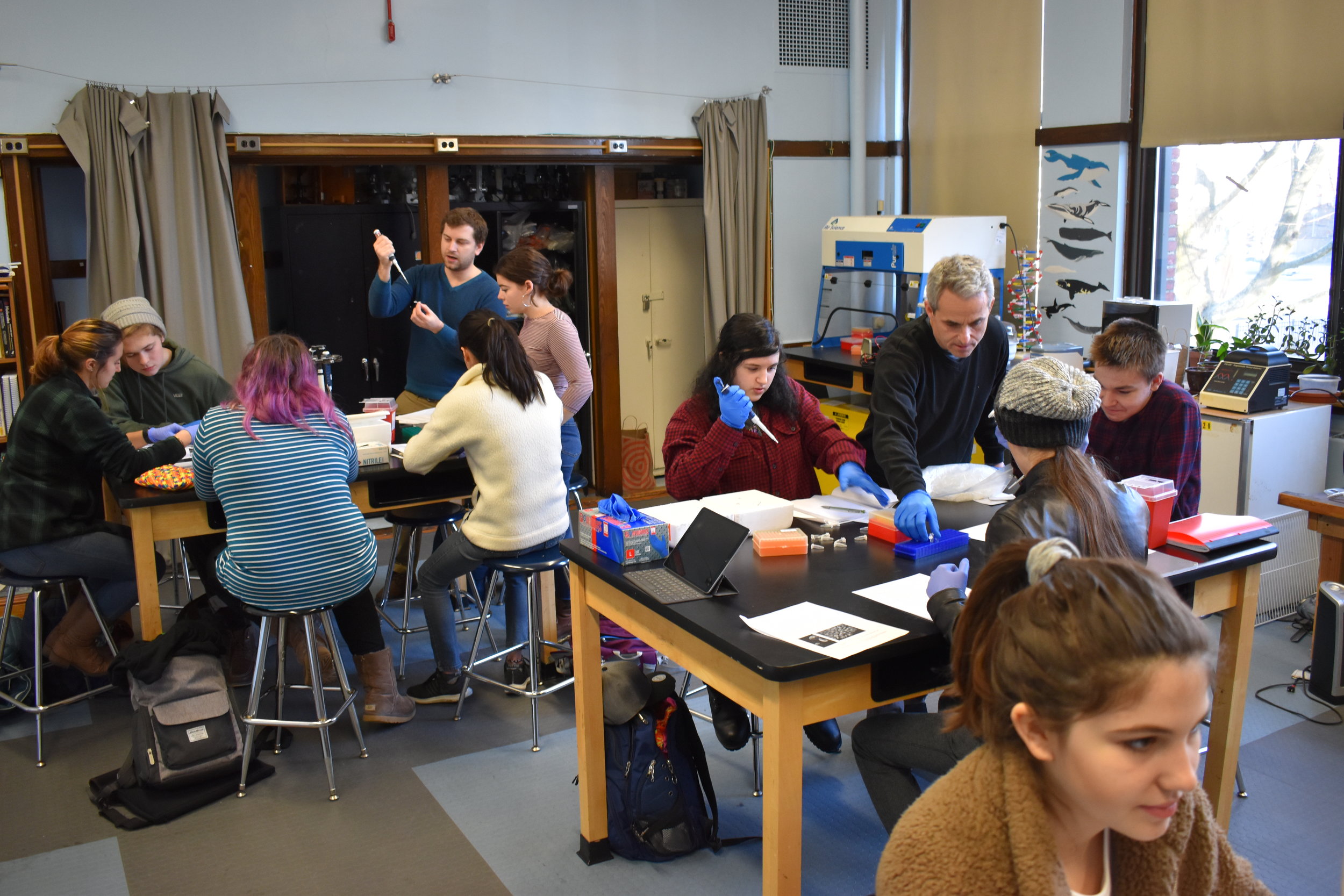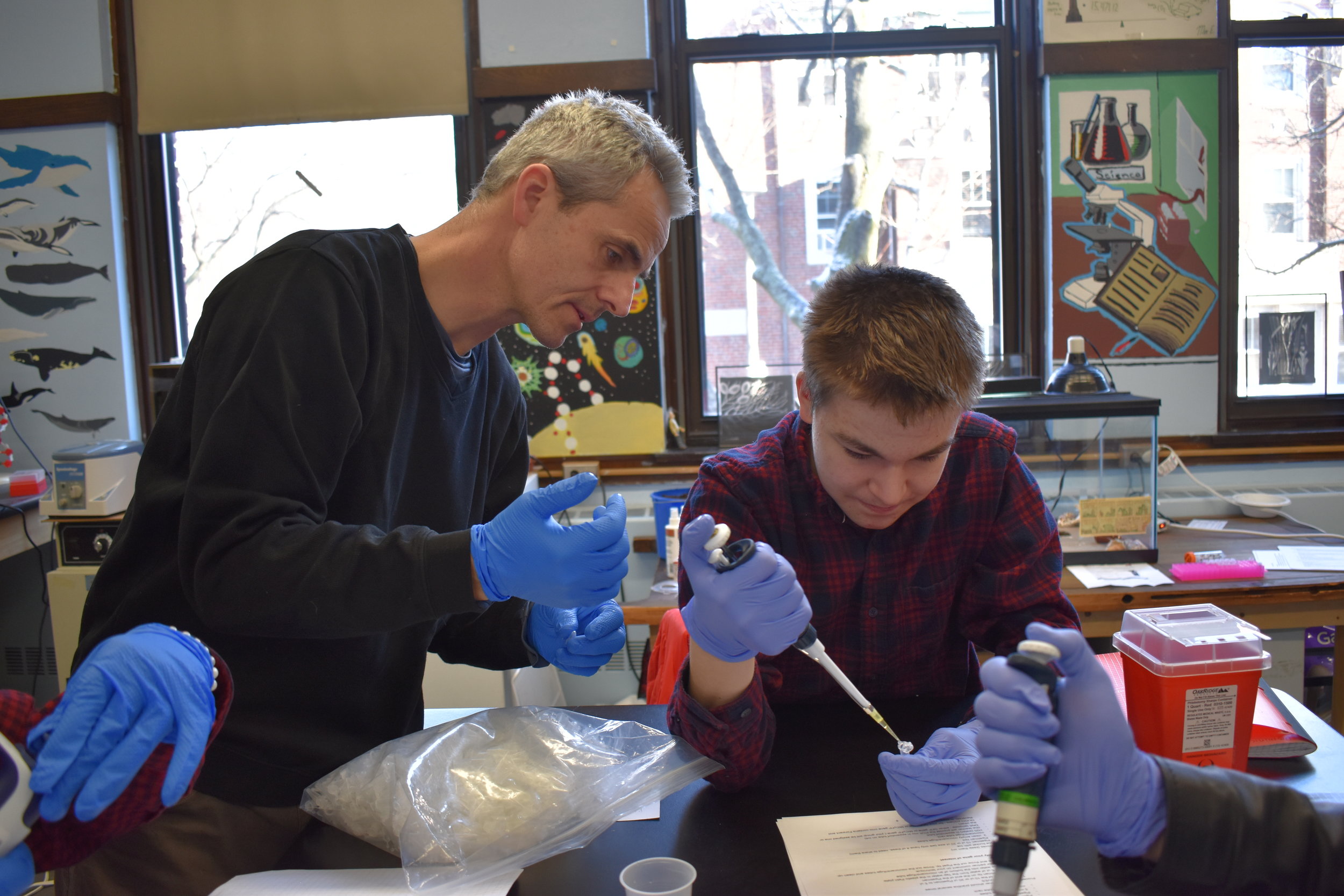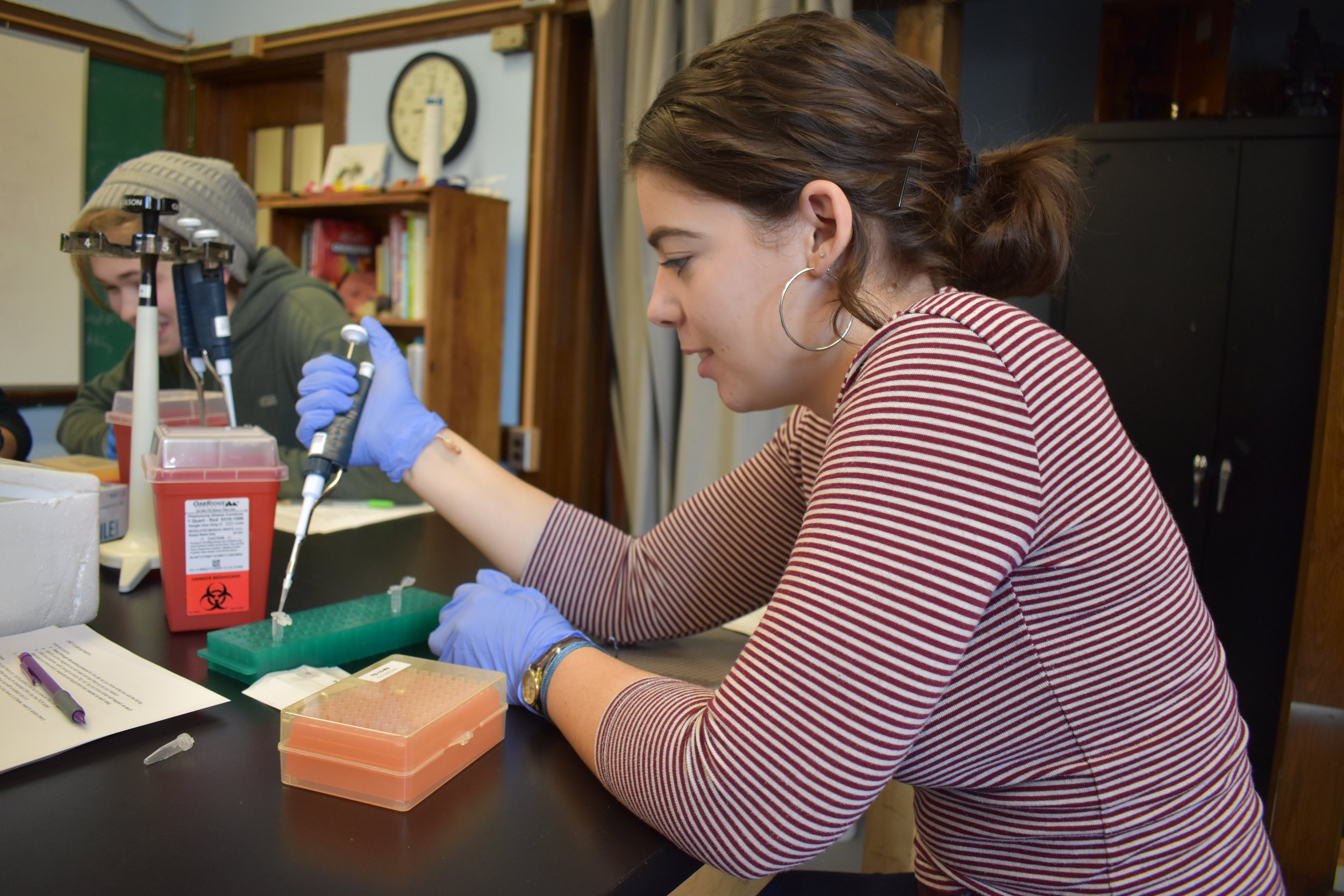From the JP Gazette: Students Complete Grant-Funded Biotechnology Lab at Meridian Academy
By Division 3 student Izzy
Originally published in the JP Gazette.
On a Tuesday morning in January, the father of one of my classmates sat us all down in our science lab to ask us questions that most of us could not answer. We didn’t know at the time that this was the beginning of an engrossing week of experimentation about biotechnology.
Biotechnology is one of the most helpful and impressive advances in science, in which genes can be cloned and proteins expressed for specific purposes. For example, the protein-digesting power of household laundry detergent often comes from proteins called proteases, and patients with diabetes are commonly treated with insulin, both of which are commonly produced through biotechnology. In our class, we were going to clone the gene found in jellyfish that make them glow green (green fluorescent protein) and the gene found in coral that makes them blue (midorishi cyan fluorescent protein).
I should mention here that I’m in 10th grade. I never thought I’d have the opportunity to clone jellyfish and coral genes as a teenager, but that kind of work isn’t really uncommon at Meridian Academy, where I go to school. Our learning is often based in the surrounding community, and our teachers love including new technologies and resources in their classrooms.
On the first day of the lab, we divided into teams of two, snapped on our safety gloves, and started the long and meticulous process that would last all week. The lab required many complex techniques. We started with polymerase chain reaction (PCR) which is a process of denaturing a double-strand of DNA by heating it up, adding a gene-specific primer, and then lowering the temperature to create multiple copies of the DNA sequence. On day two, it was time to test whether our efforts from the previous day had worked. Using a technique called agarose gel electrophoresis, we were able to tell if our DNA sequences had made successful copies. If so, we then moved on to the process of cloning the DNA into a construct known as a plasmid that would express the gene we copied. The next day, we all came in ready for the last day of experimentation, in which we transformed the plasmid into an E. coli bacteria, plated the results and then left them overnight. In the morning, we placed the bacteria under a black light and saw the bright green glow of the protein.
It was a true privilege to be a part of this five-day lab. Thanks to a grant from the Program on Cellular and Molecular Medicine at Boston Children’s Hospital, we were provided with technology and resources that most teenagers never get a chance to even learn about. Students were able to see their hard work glowing brightly under a blue light at the end of the week, and it felt incredibly rewarding to know that all of the painfully specific pipetting and attention to detail had paid off. I came away with a new appreciation of both what biotechnology makes possible in the world, and how this complex field of science works. I hope that more students get to have this kind of classroom experience in the future.




